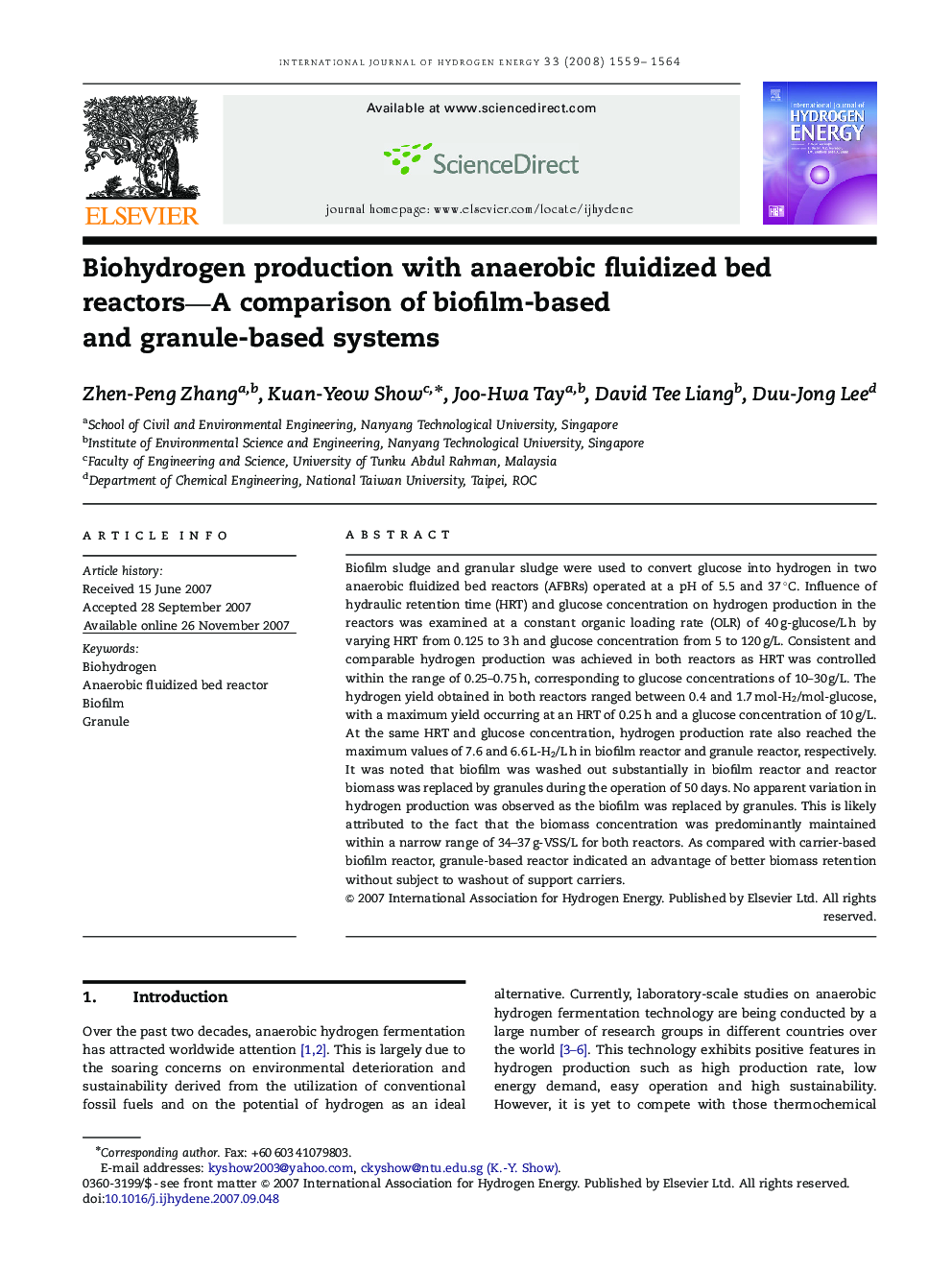| Article ID | Journal | Published Year | Pages | File Type |
|---|---|---|---|---|
| 1281771 | International Journal of Hydrogen Energy | 2008 | 6 Pages |
Biofilm sludge and granular sludge were used to convert glucose into hydrogen in two anaerobic fluidized bed reactors (AFBRs) operated at a pH of 5.5 and 37∘C. Influence of hydraulic retention time (HRT) and glucose concentration on hydrogen production in the reactors was examined at a constant organic loading rate (OLR) of 40 g-glucose/L h by varying HRT from 0.125 to 3 h and glucose concentration from 5 to 120 g/L. Consistent and comparable hydrogen production was achieved in both reactors as HRT was controlled within the range of 0.25–0.75 h, corresponding to glucose concentrations of 10–30 g/L. The hydrogen yield obtained in both reactors ranged between 0.4 and 1.7 mol-H2H2/mol-glucose, with a maximum yield occurring at an HRT of 0.25 h and a glucose concentration of 10 g/L. At the same HRT and glucose concentration, hydrogen production rate also reached the maximum values of 7.6 and 6.6 L-H2H2/L h in biofilm reactor and granule reactor, respectively. It was noted that biofilm was washed out substantially in biofilm reactor and reactor biomass was replaced by granules during the operation of 50 days. No apparent variation in hydrogen production was observed as the biofilm was replaced by granules. This is likely attributed to the fact that the biomass concentration was predominantly maintained within a narrow range of 34–37 g-VSS/L for both reactors. As compared with carrier-based biofilm reactor, granule-based reactor indicated an advantage of better biomass retention without subject to washout of support carriers.
